Latest Publications
Coevolutionary analysis of Pseudomonas syringae–phage interactions to help with rational design of phage treatments
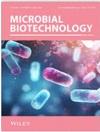 Mojgan Rabiey, Emily R. Grace, Paulina Pawlos, Muscab Bihi, Haleem Ahmed, Georgina E. Hampson, Amna Al Riyami, Leena Alharbi, Rosa Sanchez-Lucas, Naina Korotania, Maria Laura Ciusa, Olivia Mosley, Michelle T. Hulin, Laura Baxter, Sabrine Dhaouadi, Diana Vinchira-Villarraga, Robert W. Jacks
Mojgan Rabiey, Emily R. Grace, Paulina Pawlos, Muscab Bihi, Haleem Ahmed, Georgina E. Hampson, Amna Al Riyami, Leena Alharbi, Rosa Sanchez-Lucas, Naina Korotania, Maria Laura Ciusa, Olivia Mosley, Michelle T. Hulin, Laura Baxter, Sabrine Dhaouadi, Diana Vinchira-Villarraga, Robert W. Jacks
Pseudomonas syringae pathovar syringae (Pss) is a major pathogen of cherry (Prunus avium) causing bacterial canker of the stem, leaf and fruit, impacting productivity and leading to a loss of trees. In an attempt to find a treatment for this disease, naturally occurring bacteriophage (phage) that specifically target Pss is being investigated as a biocontrol strategy. However, before using them as a biocontrol treatment, it is important to both understand their efficacy in reducing the bacterial population and determine if the bacterial pathogens can evolve resistance to evade phage infection. To investigate this, killing curve assays of five MR phages targeting Pss showed that phage resistance rapidly emerges in vitro, even when using a cocktail of the five phages together. This study shows that understanding the genetic mechanisms of bacterial pathogen resistance to phages is important for helping to design a more effective approach to kill the bacteria while minimizing the opportunity for phage resistance to manifest.
Phenotypic and genotypic characterization of fifty strains of Beauveria spp. (Ascomycota, Cordycipitaceae) fungal entomopathogens from diverse geographic origins against the diamondback moth, Plutella xylostella (Lepidoptera: Plutellidae)
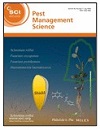 Laura Reyes-Haro, Gillian Prince, Rommel Santiago Granja-Travez, David Chandler
Laura Reyes-Haro, Gillian Prince, Rommel Santiago Granja-Travez, David Chandler
The diamondback moth (DBM) (Plutella xylostella) causes large losses to global crop production. Conventional insecticides are losing effectiveness due to resistance. Consequently, there is a growing interest in sustainable control methods like entomopathogenic fungi (EPF) in Integrated Pest Management. However, the field efficacy of fungi varies due to environmental influences. In this study, a group of 50 Beauveria strains sourced from different locations were characterized by genotype and phenotype with respect to their conidial production, temperature and UV-B radiation tolerance, and virulence against DBM. Survival under environmental conditions is crucial for EPF-based commercial products against DBM. Results suggest strain tolerance to environmental stressors is more tied to specific micro-climatic factors than geographical origin. Each strain exhibited unique characteristics; for example, the most virulent strain (#29) was highly UV-sensitive. Therefore, characterizing diverse strains provides essential genotypic and phenotypic insights, which are fundamental for understanding their role as biocontrol agents while facilitating efficient biopesticide product development and uptake
Response patterns of the microbiome during hexavalent chromium remediation by Tagetes erecta L
 Juanjuan Xiao, Deying Wang, Banerjee Sinchan, Ryan Mushinski, Decai Jin, Ye Deng
Juanjuan Xiao, Deying Wang, Banerjee Sinchan, Ryan Mushinski, Decai Jin, Ye Deng
Chromium pollution, particularly hexavalent chromium [Cr(VI)], may threaten the environment and human health. This study investigated the potential of Tagetes erecta L. (Aztec marigold) for phytoremediation of soil contaminated with Cr(VI), and focused on the effects of varying concentrations of Cr(VI) on both the physicochemical properties of soil and microbiome of Tagetes erecta L. We observed that Tagetes erecta L. showed tolerance to Cr(VI) stress and maintained normal growth under these conditions, as indicated by bioconcentration factors of 0.33–0.53 in shoots and 0.39–0.70 in roots. Meanwhile, the structure and diversity of bacterial communities were significantly affected by Cr(VI) pollution. This study explored the interactions between heavy metals, microorganisms, and plants, providing valuable insights for developing in situ bioremediation of Cr(VI)-contaminated soils.
Multiple toxins and a protease contribute to the aphid-killing ability of Pseudomonas fluorescens PpR24
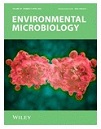 Deepa Paliwal, Mojgan Rabiey, Tim H. Mauchline
Deepa Paliwal, Mojgan Rabiey, Tim H. Mauchline
Aphids are globally important pests causing damage to a broad range of crops. Due to insecticide resistance, there is an urgent need to develop alternative control strategies. In our previous work, we found Pseudomonas fluorescens PpR24 can orally infect and kill the insecticide-resistant green-peach aphid (Myzus persicae). However, the genetic basis of the insecticidal capability of PpR24 remains unclear. This comprehensive host–pathogen transcriptomic analysis provides novel insight into the molecular basis of bacteria-mediated aphid mortality and the potential of PpR24 as an effective biocontrol agent.
Imaging Single-Cell Ca2+ Dynamics of Brainstem Neurons and Glia in Freely Behaving Mice
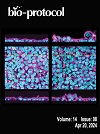 Amol M. Bhandare, Nicholas Dale, Robert T. R. Huckstepp
Amol M. Bhandare, Nicholas Dale, Robert T. R. Huckstepp
In vivo brain imaging, using a combination of genetically encoded Ca2+ indicators and gradient refractive index (GRIN) lens, is a transformative technology that has become an increasingly potent research tool over the last decade. We have refined the intravital imaging technique to image deep brain nuclei in the ventral medulla oblongata, one of the most difficult brain structures to image due to the movement of brainstem structures outside the cranial cavity during free behaviour (head and neck movement), whose targeting requires GRIN lens insertion through the cerebellum—a key structure for balance and movement. Our protocol refines the implantation method of GRIN lenses, giving the best possible approach to image deep extracranial brainstem structures in awake rodents with improved cell rejection/acceptance criteria during analysis. This revised method paves the way to image challenging brainstem structures to investigate their role in complex behaviours such as breathing, circulation, sleep, digestion, and swallowing, and could be extended to image and study the role of cerebellum in balance, movement, motor learning, and beyond.
Genetic Variation of Turnip Yellows Virus in Arable and Vegetable Brassica Crops, Perennial Wild Brassicas, and Aphid Vectors Collected from the Plants
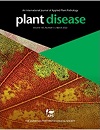 Ricardo J G Pimenta, Kyle Macleod, Robyn Babb, Kaitlyn Coleman, Joni MacDonald, Elvis Asare-Bediako, Max J Newbert, Carol E Jenner, John A Walsh
Ricardo J G Pimenta, Kyle Macleod, Robyn Babb, Kaitlyn Coleman, Joni MacDonald, Elvis Asare-Bediako, Max J Newbert, Carol E Jenner, John A Walsh
Turnip yellows virus (TuYV; Polerovirus, Solemoviridae) infects and causes yield losses in a range of economically important crop species, particularly the Brassicaceae. Although the incidence and genetic diversity of TuYV has been extensively investigated in recent years, little is known about how the diversity within host plants relates to that in its vectors. Arable oilseed rape (Brassica napus) and vegetable brassica plants (Brassica oleracea), wild cabbage (B. oleracea), and aphids present on these plants were sampled in the field in three regions of the United Kingdom. High levels of TuYV (82 to 97%) were detected in plants in all three regions following enzyme-linked immunosorbent assaysComparative analyses between TuYV sequences from host plants and B. brassicae collected from respective plants revealed differences between some ORF0 sequences, which possibly indicated that at least two of the aphids might not have been carrying the same TuYV isolates as those present in their host plants. Maximum likelihood phylogenetic analyses revealed three distinct major clades for ORF0 and one for ORF3, with some distinct subclades. Some clustering was related to geographic origin. Explanations for TuYV sequence differences between plants and the aphids present on respective plants and implications for the epidemiology and control of TuYV are discussed.
